How to Install WordPress on Vultr
Vultr is a popular alternative to DigitalOcean, offering affordable servers located around the globe. Their High Frequency Compute instances are noticeably fast and are well suited for WordPress hosting. Vultr is fully integrated with SpinupWP, meaning you can connect SpinupWP to your Vultr account and spin up servers at Vultr directly from your SpinupWP dashboard.
In this doc we’ll cover:
Adding Vultr as Your Server Provider
If you haven’t already, you’ll first need to sign up for a 7-day free trial of SpinupWP.
Next, let’s go ahead and connect to Vultr. Before you start this process, you will need to sign up for a Vultr account (<< Use this link to receive $100 in Vultr credits if you’re new to Vultr) if you don’t already have one.
Log in to your Vultr account and go to the API Settings. You will need to enable the API by clicking on the Enable API button. Once the API has been enabled, you will need to whitelist the SpinupWP IP addresses in the Access Control section. Alternatively, you can click on Allow All IPv4 to whitelist all IP addresses.
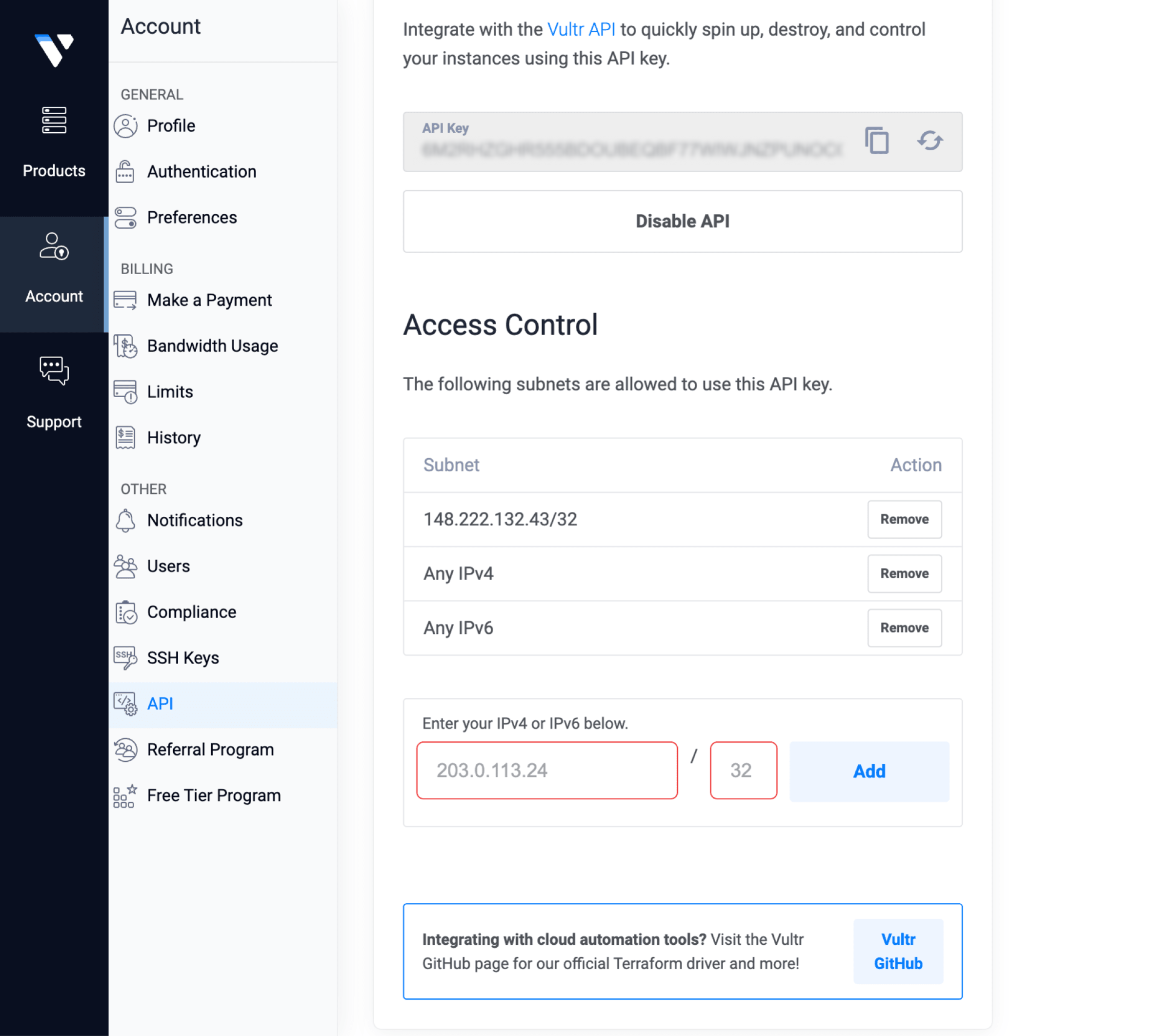
Then you will need to copy your API Key to enter into SpinupWP.
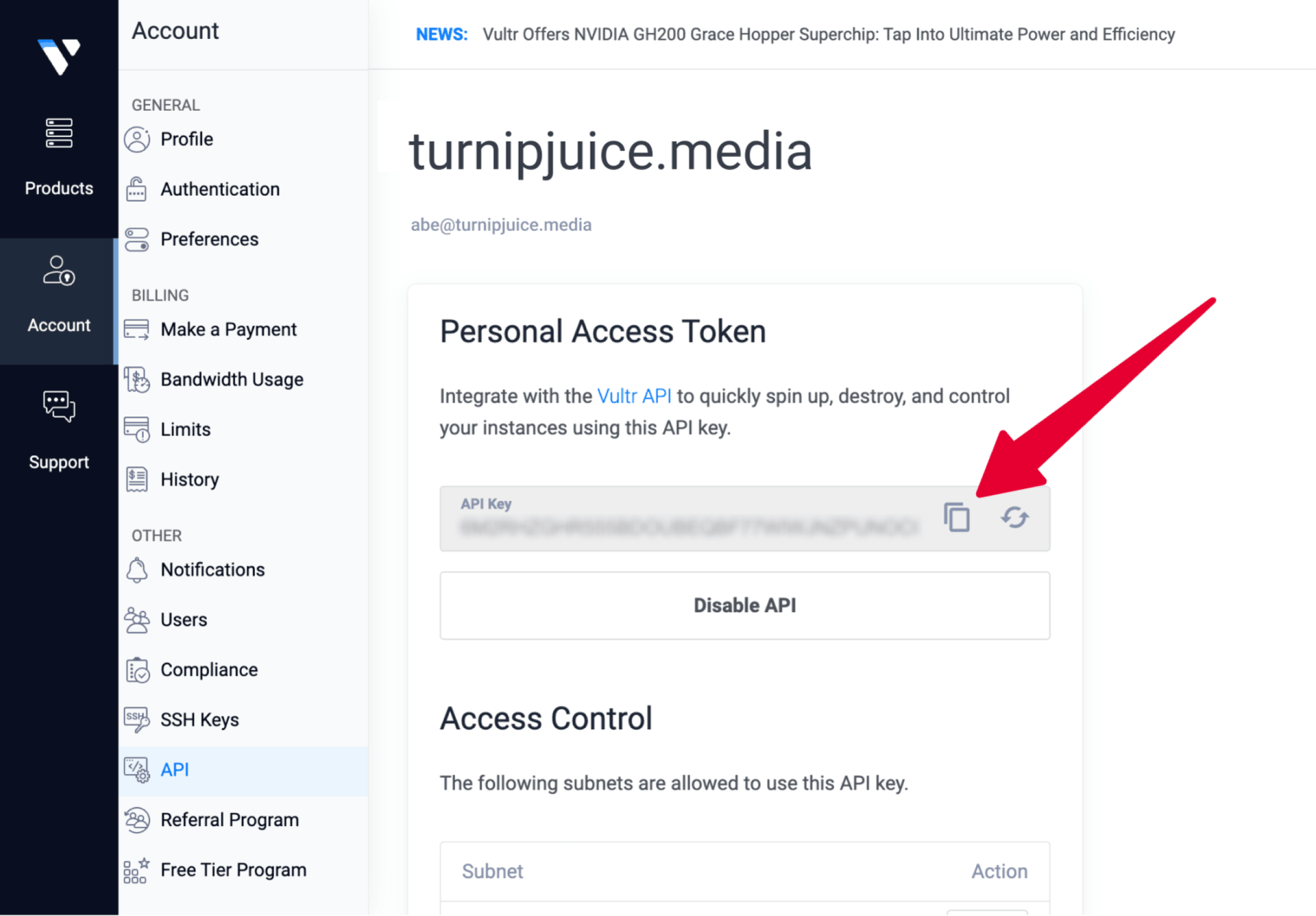
Log in to SpinupWP and click Spin Up a New Server from the dashboard. Next, select Vultr from the list of available providers.

Enter the key that you copied from Vultr into the API Key field and click Create on Vultr to finish adding the server provider.
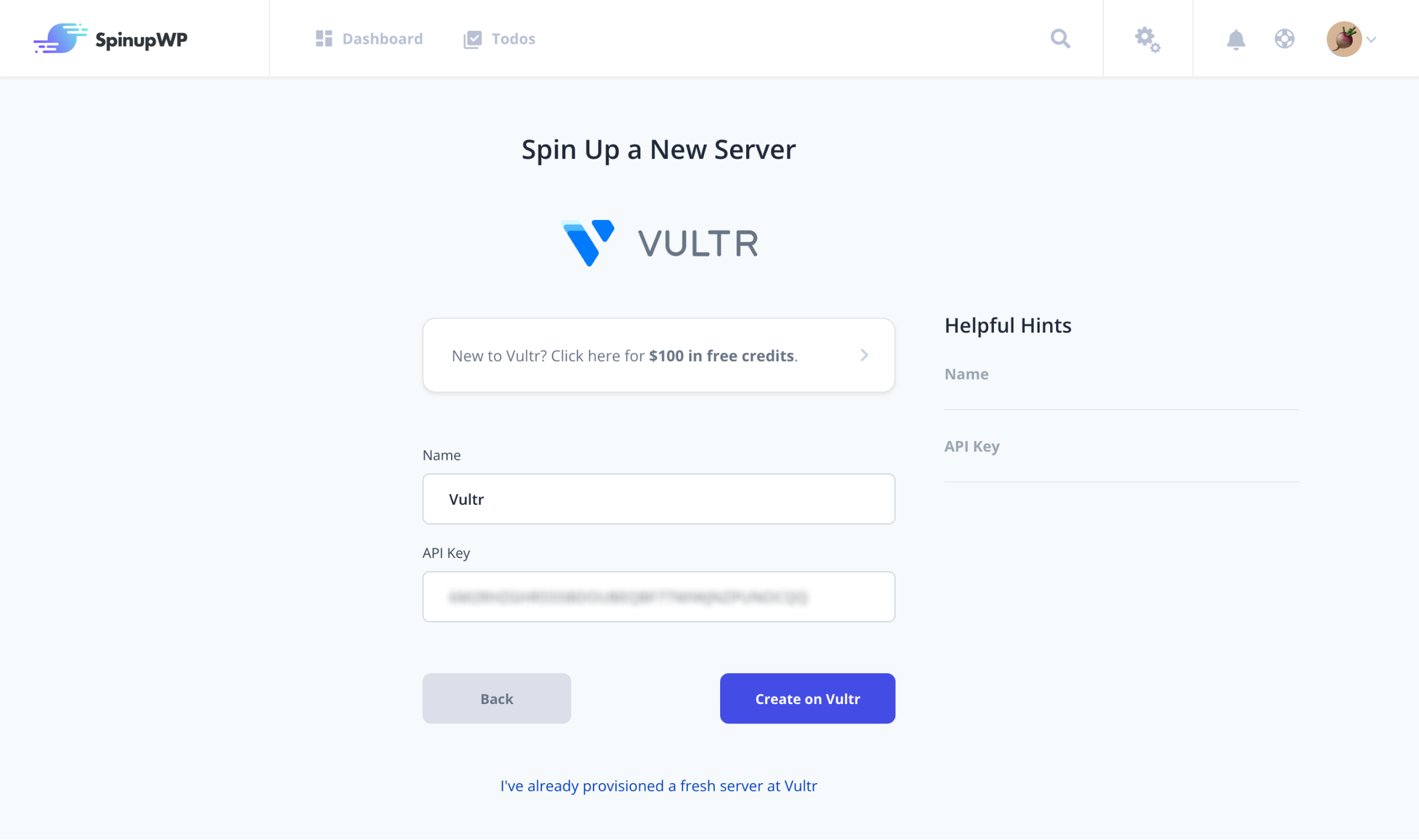
Provisioning a Server
Vultr Server options
Now you choose the region for your Vultr server and the size of the server from the available options. We recommend production servers have 2 GB or more of memory. Servers can always be upgraded to a larger size later from the Vultr dashboard but the server will be offline while it resizes. For more help choosing a server size, check out the Server Size doc.
You can choose to have Vultr enable Auto Backups for an additional monthly fee. These are server backups and are not to be confused with SpinupWP’s site backups feature which backs up site files and database, rather than the entire server. If you choose to enable this feature, you’ll be billed directly by Vultr.
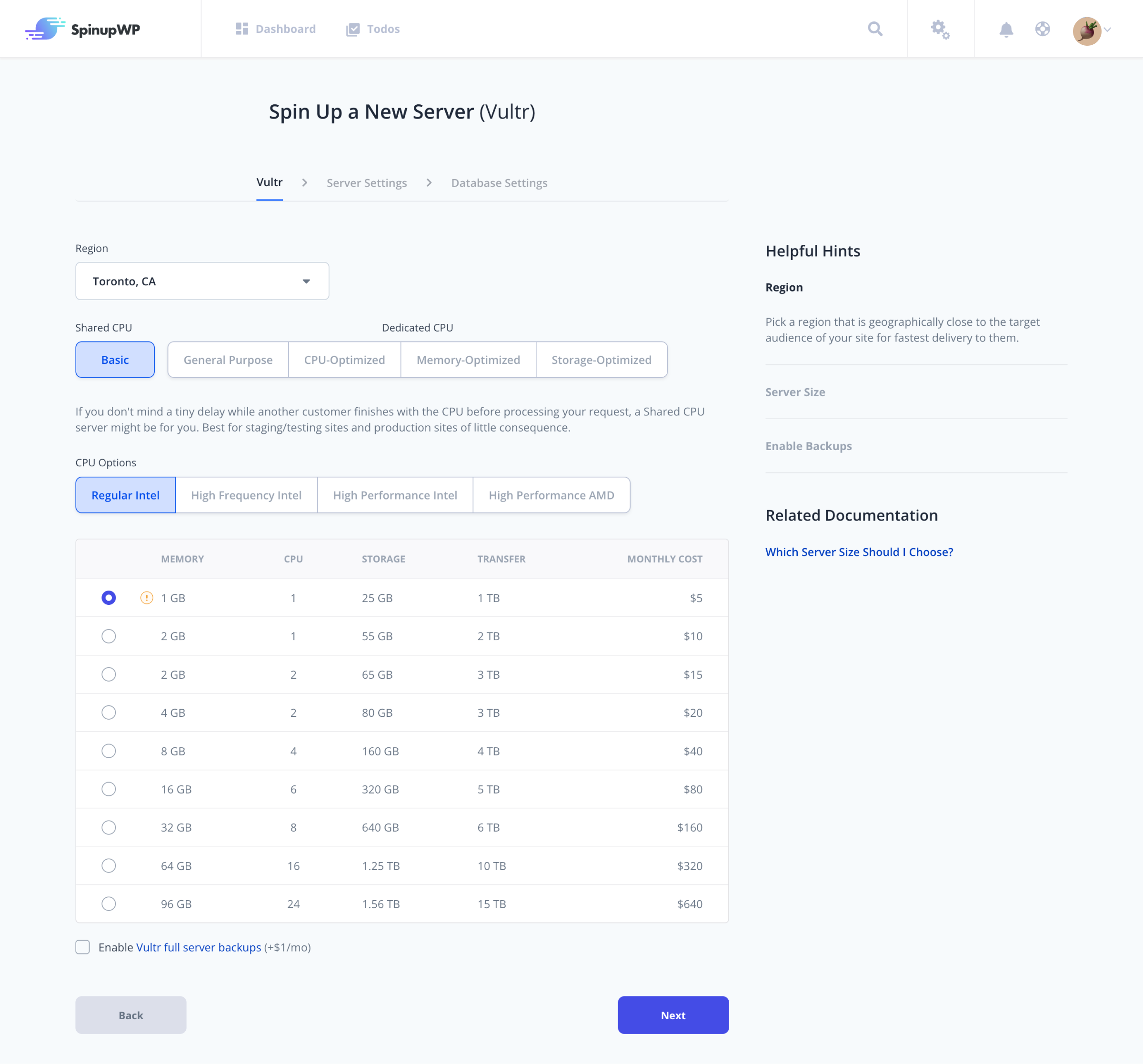
Server Settings
Next, you need to enter a hostname for the server, so you can distinguish servers from each other. For example, if you are spinning up a new server for a client site, such as xyzvanlines.com, then using the domain name is recommended. If you are spinning up a server for your agency to use for a bunch of client staging sites, you might want to use something like staging.turnipjuice.media.
On this screen, you will also be able to configure the server timezone. The selected timezone will determine when server cron jobs run as well as the date format of some log files.
You will also have an opportunity to enter an optional post-provision script on this screen. This is a one-time script that will be run on the server once the provision process has completed. This is handy if you have any additional packages you know you will want to install on the server.
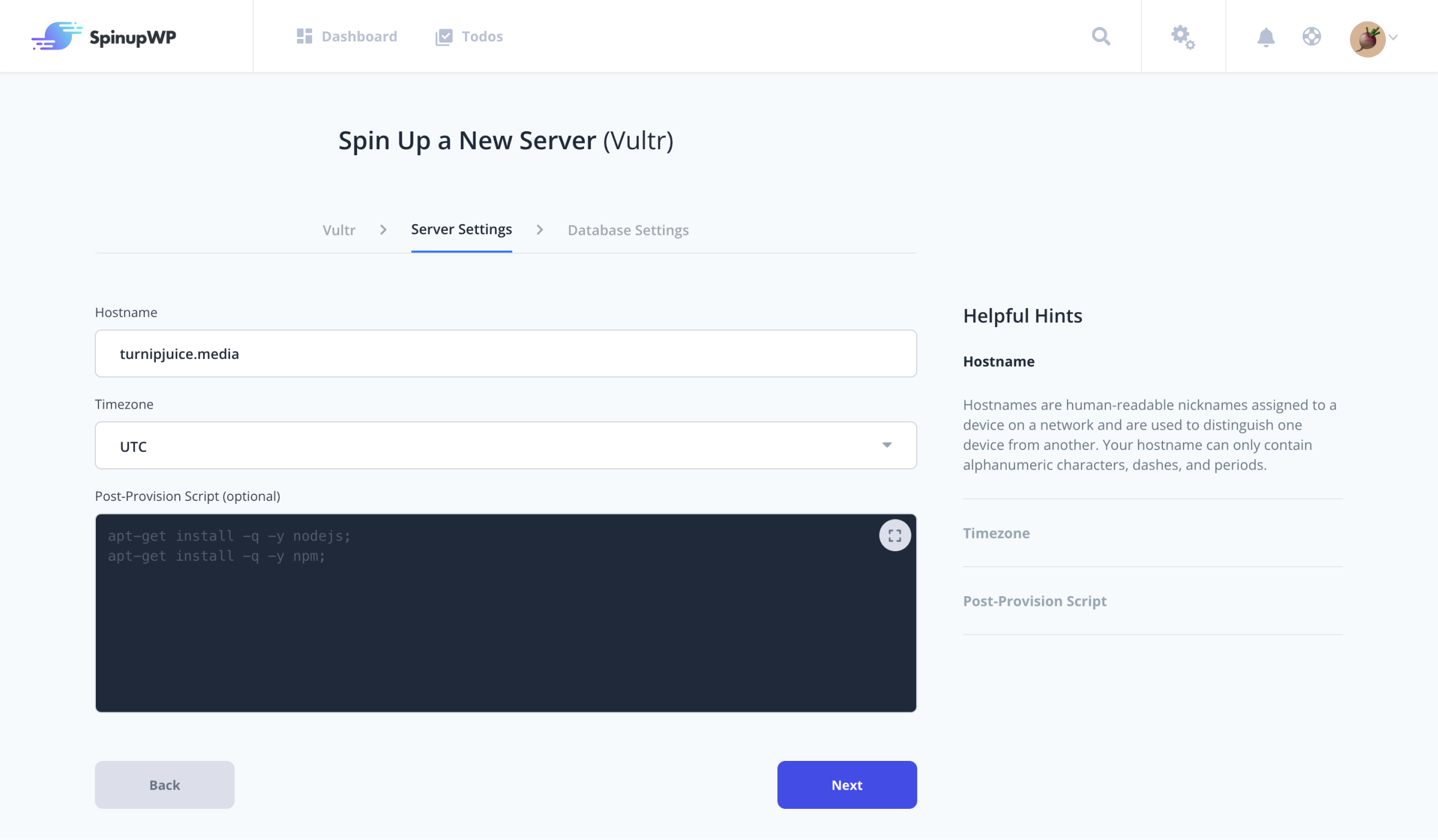
Database settings
Lastly, you can choose to install MySQL on the server or connect an external database server.
Installing MySQL
Installing MySQL on the new server is very straightforward. The only option you need to think about is the database root password.
A random secure database root password is generated for you, but you can change it to something else if you prefer. You may want to note it down or store it in a password manager for future reference, but you can always reset it in SpinupWP later.
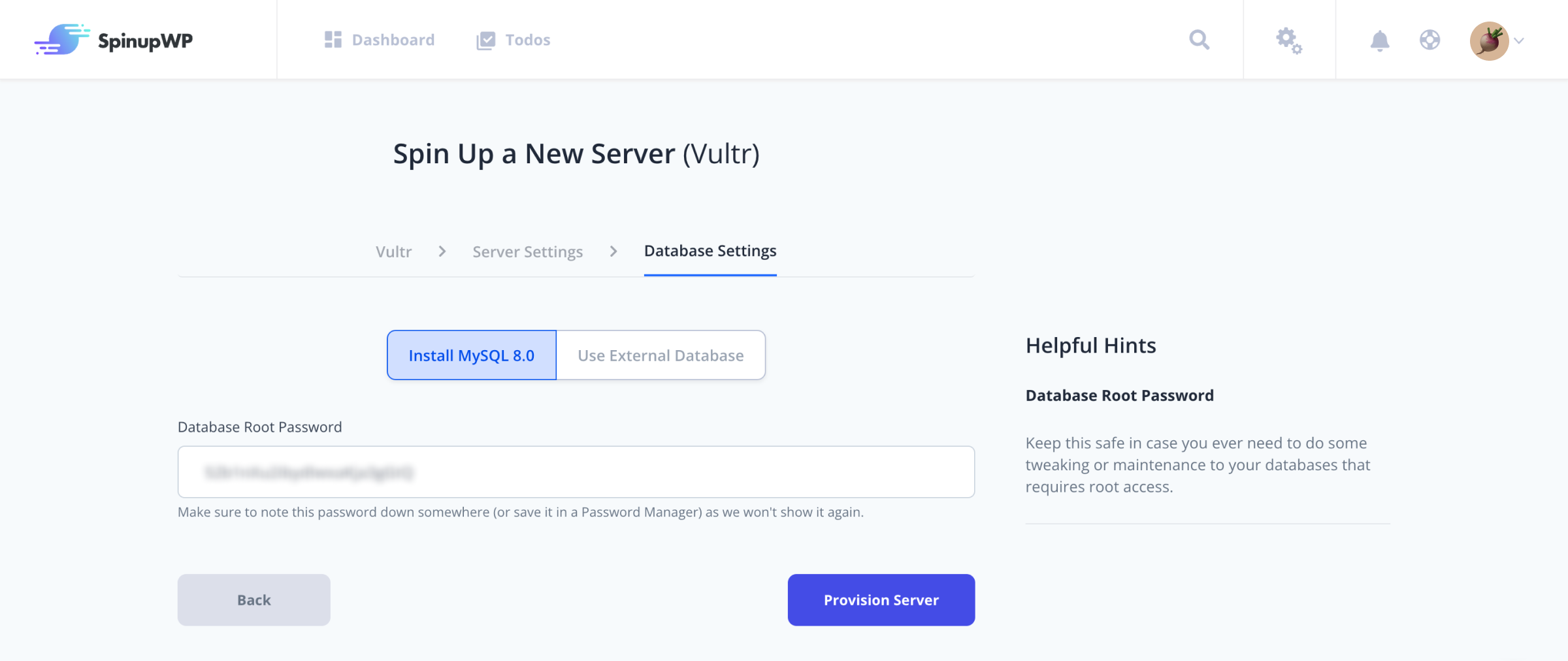
Using an External Database
Using an external database requires a little more configuration, but offers many benefits.
Run the Provision
Once you’re happy with the settings, click Provision Server and the server will start to be provisioned for you.
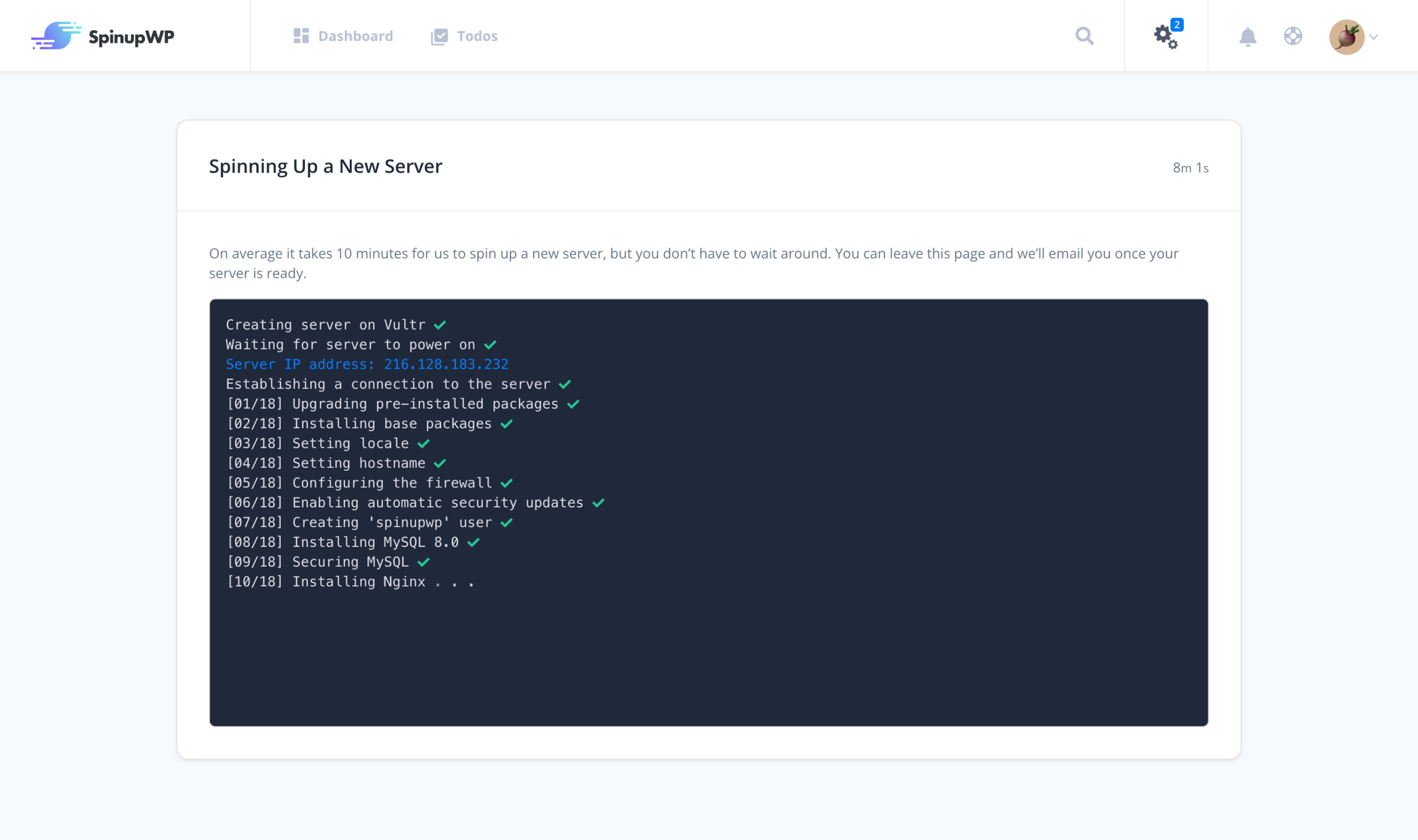
This process takes around 10 minutes, but you don’t need to stay on the screen and wait. We’ll email you when it’s complete and put a notification in the top bar in the app.
The IP address of your new server will be provided during this process. If you are using an external database, don’t forget to add it to any whitelists with the hosted database provider.
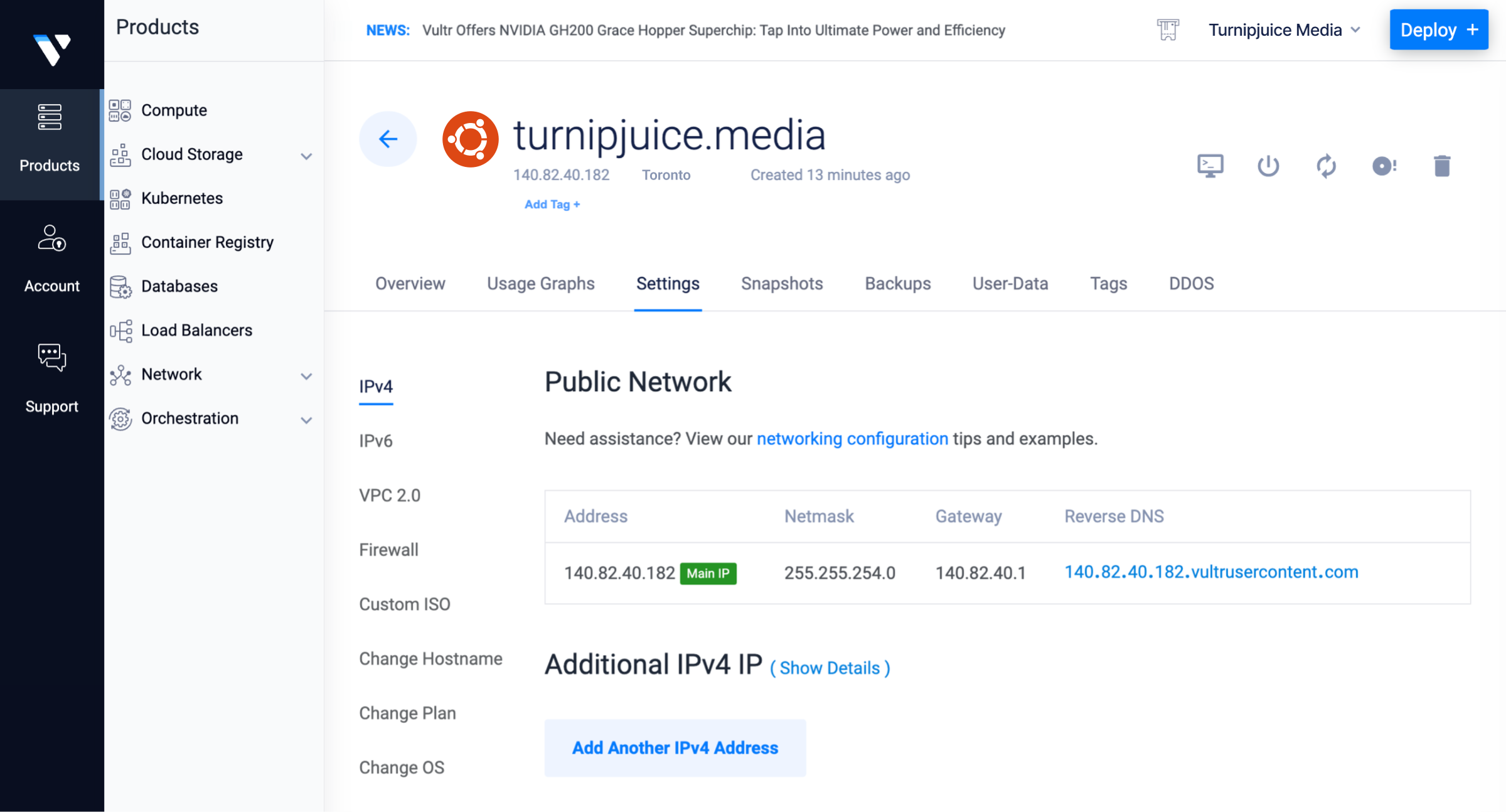
The server is provisioned with the latest stable server software (Nginx, PHP-FPM, Redis) for hosting WordPress sites. The following docs will help you understand more about how the server is set up and configured:
- Understanding System Users
- File Ownership and Permissions
- Server Paths & Locations
- Understanding PHP Pools
- The SpinupWP Cache Daemon
Next steps
To continue your setup and add a site, see our Getting Started doc.
What to expect after adding a site? You’ll have the option to configure your server and sites to your needs via the SpinupWP dashboard.
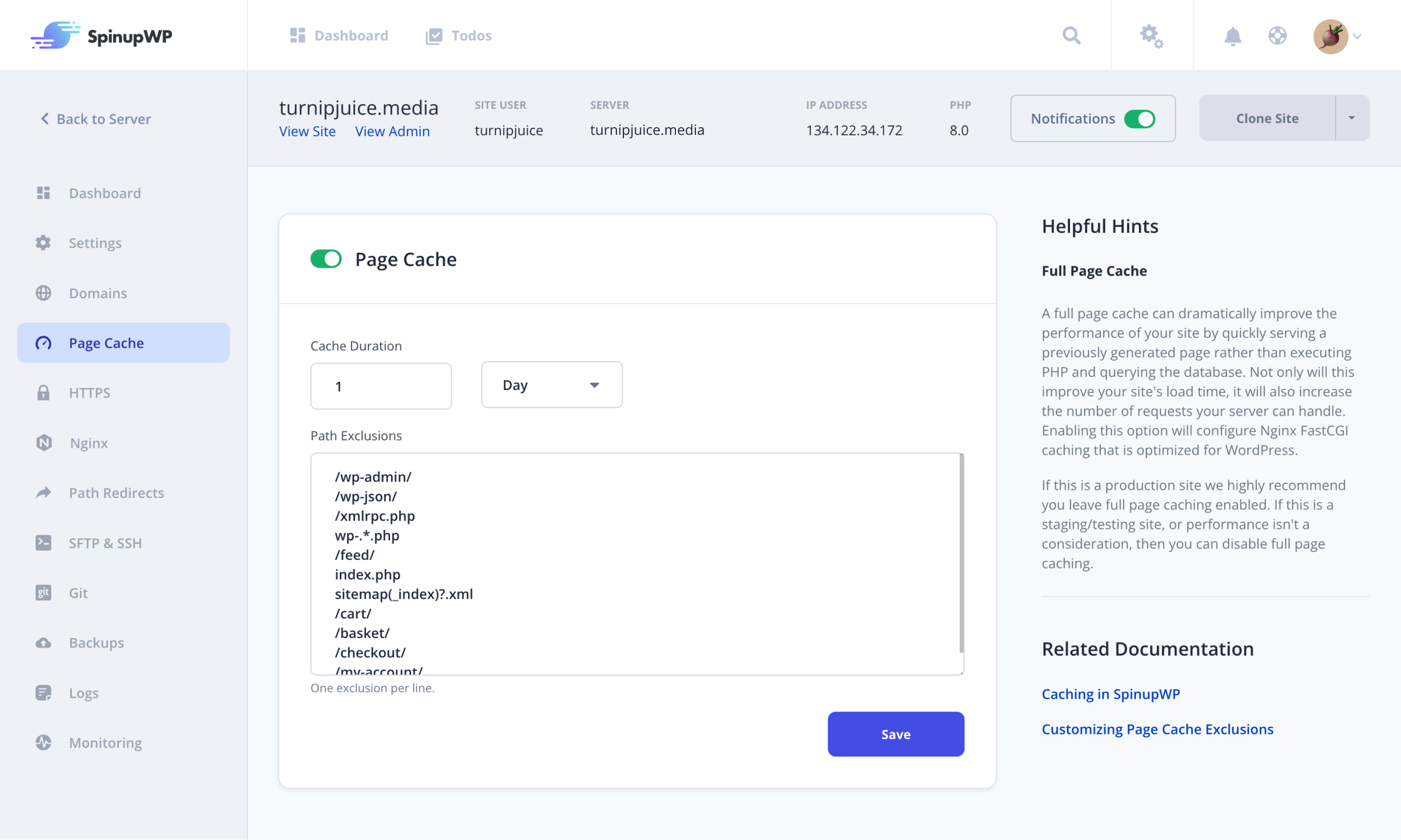
You’ll be able to quickly enable page caching. When enabled, SpinupWP configures full page caching, essentially turning your site into a static site and dramatically improving the load time of your site.
You can also toggle on an SSL certificate to enable HTTPS. This generates a free Let’s Encrypt certificate so you don’t have to manually manage this yourself. If you’d prefer to use a custom SSL certificate, you’ll have the opportunity to upload that instead.
If you’re looking to add rewrite rules or prevent PHP scripts from being executed in the uploads folder, the Nginx settings steps will cover that.
We’ll also cover enabling SFTP & SSH access to your site and setting up site backups.
SpinupWP can take care of automated daily site backups which include full backups of your site files (media, themes and plugins). You’ll have the option to backup to Amazon S3, DigitalOcean Spaces, Akamai/Linode, Google Cloud Storage, Wasabi or Backblaze B2.
Follow our Getting Started Guide for step by step instructions for all of the above mentioned features and more.